Awakening the potential of medicinal herbs in Western Nghe An
(Baonghean) - The Department of Science and Technology (DOST) is a pioneer in successfully implementing many programs and projects to apply science and technology to practical life; including the program to preserve, exploit and develop medicinal plant genetic resources in the Western region of Nghe An.
Preserving many endangered medicinal plant genetic resources
“It is necessary to turn medicinal plants into a development strength to improve the lives of people in Western Nghe An” - this is the emphasis of Chairman of the Provincial People's Committee Thai Thanh Quy during his visit and work in Ky Son district in March 2019. The Chairman of the Provincial People's Committee affirmed this when seeing the potential and advantages to develop medicinal plants in communes such as: Na Ngoi, Tay Son, Huoi Tu, Muong Long.
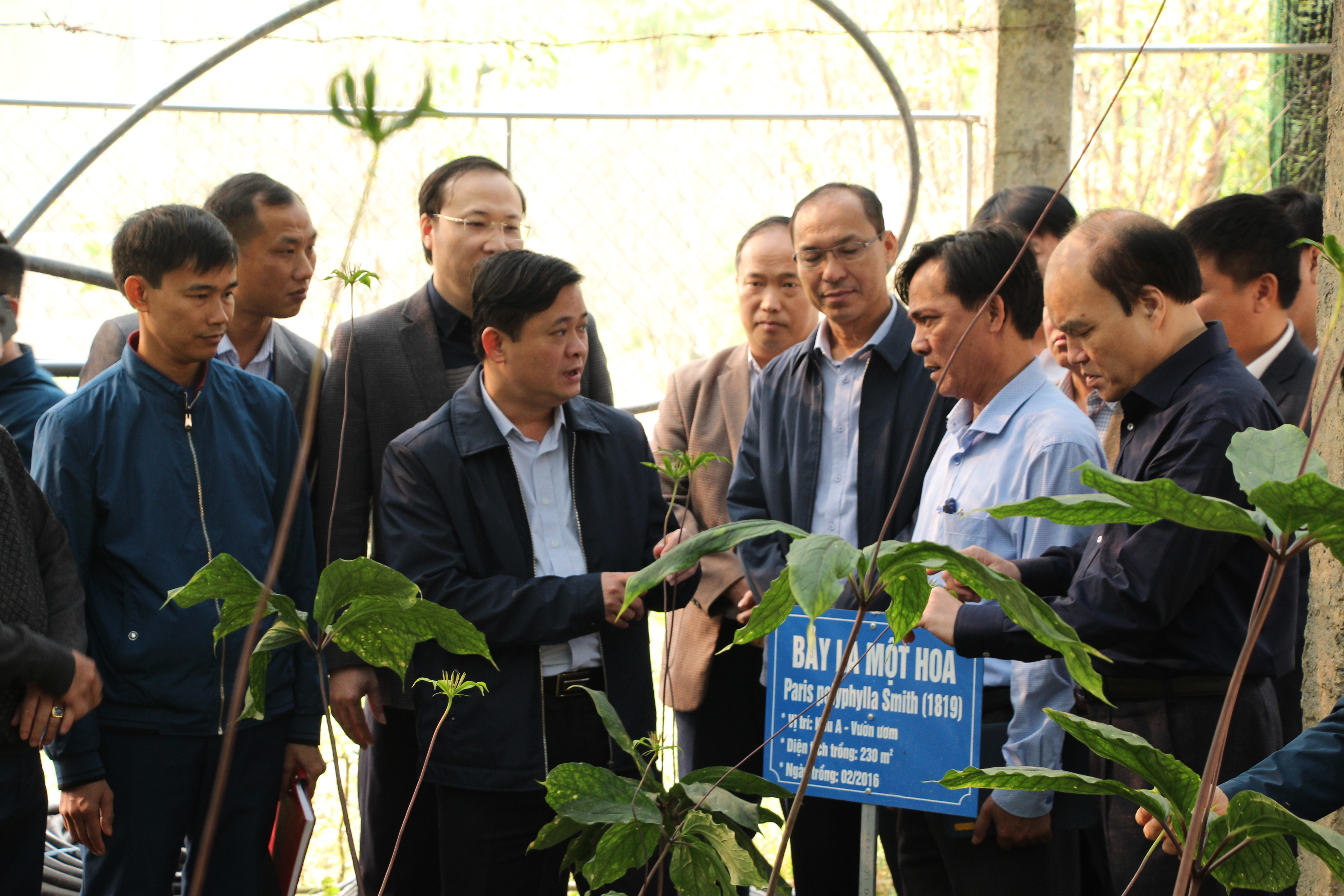 |
| Leaders of the Department of Science and Technology discussed with Chairman of the Provincial People's Committee Thai Thanh Quy about the development of medicinal plants in the western region of Nghe An. Photo: Dao Tuan |
In particular, in Muong Long commune, the Department of Science and Technology in collaboration with Muong Long Medicinal Materials Joint Stock Company under TH Group has deployed a medicinal materials production area with an area of 136 hectares located at an altitude of more than 1,300m above sea level.
With cool climate and soil conditions all year round, 12 different medicinal herbs have been planted and tested here and have given positive results. Among them are main varieties such as: Puxailaileng ginseng, 7-leaf 1-flower ginseng, northern ginseng, purple orchid, angelica, codonopsis, red salvia, la han qua, red polygonum...
Most notably, the Puxailaileng ginseng species in Ky Son land was discovered on Puxailaileng mountain at an altitude of over 2,700m. This ginseng variety is evaluated by experts as having the same quality as Ngoc Linh ginseng in Quang Nam. Moreover, for the first time in Nghe An, Puxailaileng ginseng variety was propagated from cell tissue with a success rate of about 30%.
Western Nghe An has more than dozens of rare medicinal species, distributed in remote districts with large slopes such as: Ky Son, Tuong Duong, Que Phong, Quy Chau...
The worrying thing is that the medicinal plant carpet in Western Nghe An is facing the risk of disappearance and extinction due to overexploitation and the lack of conservation solutions. Realizing the risks to the medicinal plant system, on November 22, 2013, the People's Committee of Nghe An province issued Decision No. 5529/QD-UBND approving the framework project for provincial-level genetic resource conservation tasks for the period 2014 - 2020. Accordingly, 34 genetic resources of animals, plants and microorganisms were included in the list for conservation in each period.
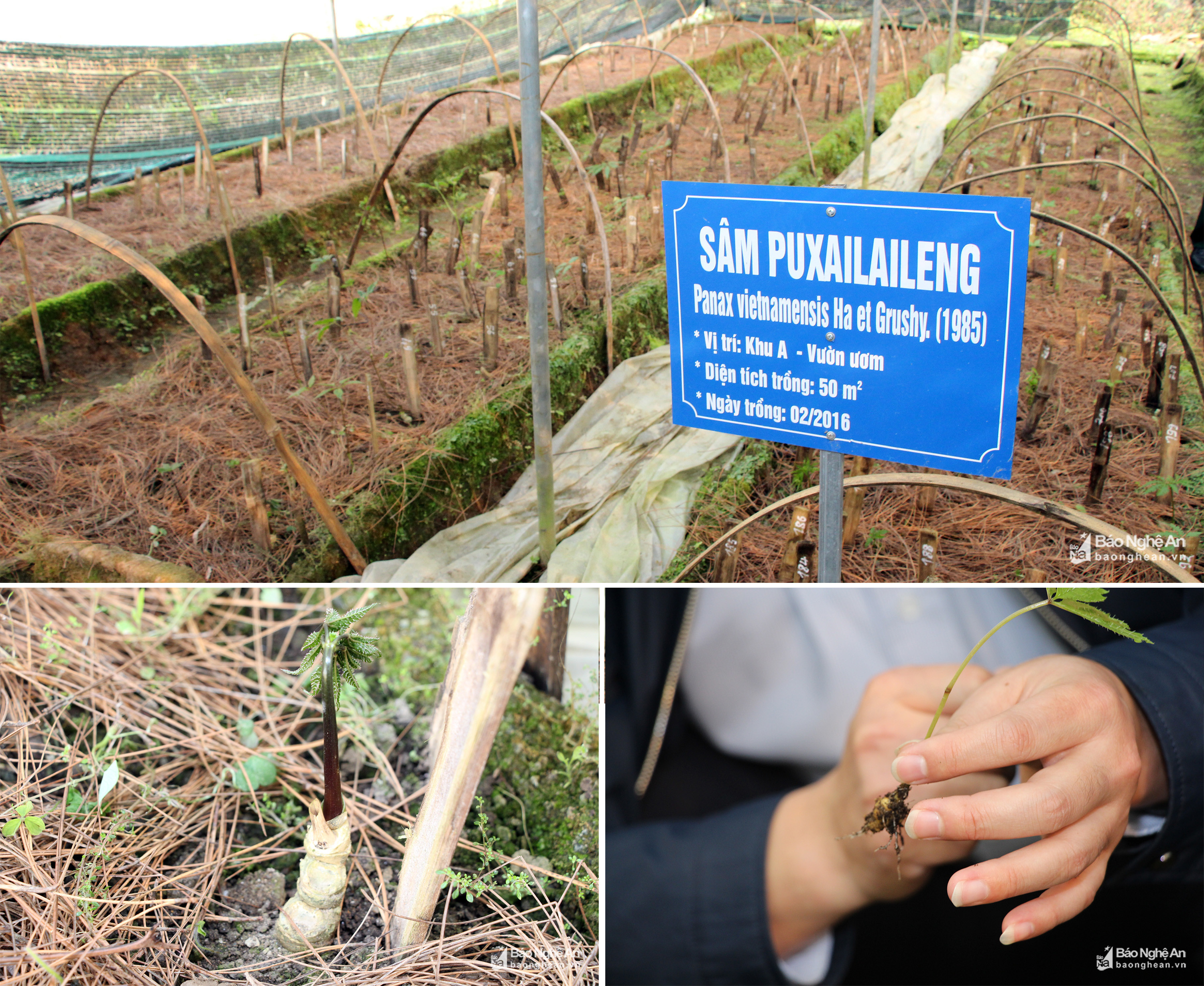 |
| Puxailaileng nursery in Muong Long commune (Ky Son); A 5-year-old Phusailaileng ginseng plant; A Puxailaileng ginseng plant propagated by tissue grafting in the laboratory. Photo courtesy of Dao Tuan |
From 2015 to 2018, Nghe An Center for Application of Science and Technology Advances conducted investigations and reviews in 6 districts: Quy Hop, Quy Chau, Que Phong, Con Cuong, Tuong Duong, Ky Son and at Pu Mat National Park, Pu Hoat and Pu Huong Nature Reserves.
The unit has collected samples, determined locations, assessed the level of danger and identified 28 precious medicinal plant gene sources, including 19 rare and precious species at high risk of extinction.
From the investigation results, the Center for Application of Science and Technology Advances has submitted to the Department of Science and Technology a proposal to the People's Committee of Nghe An province to approve the list of additional 17 rare and precious medicinal plant genetic resources and the precious specialty Shan snow tea plant genetic resources to the list of provincial-level gene conservation tasks framework projects to be implemented from 2014 to 2020.
From the results of field investigations, the Department of Science and Technology has called on and mobilized many domestic and foreign scientists to participate in surveys and research from practice to the laboratory.
On that basis, apply scientific projects and works to preserve and develop genetic resources for many medicinal plants. Scientific activities can be mentioned such as: analyzing the chemical composition of essential oils in the leaves and stems of the plant. This is a precious medicinal plant used to treat back pain, trauma (broken bones), antibiotics, hemostasis, massage, stimulant and aphrodisiac, can be prepared into anti-malaria drugs, tonics and health enhancement.
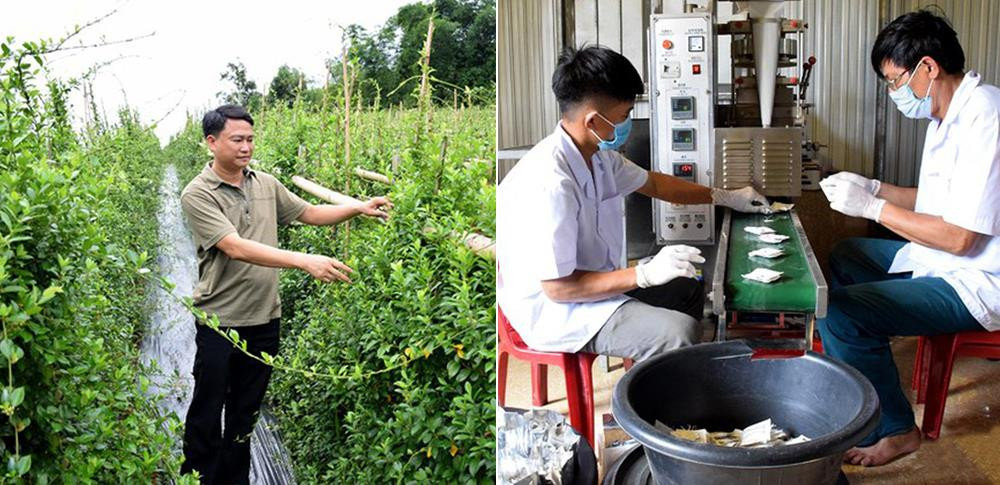 |
| The garden of spoon plants and the packaging process in paper bags (filter bags), ensuring food hygiene and safety according to the regulations of the Ministry of Health of Pu Mat Pharmaceutical Joint Stock Company. Photo: Xuan Hoang |
Currently, the Provincial Center for Application of Science and Technology Advances has built a model of planting 30 individuals of mu tun trees in forest gardens in Muong Noc commune, Que Phong district.
Regarding the yellow camellia tree, since 2012, a Japanese research team led by Professor Hakoda in collaboration with Hanoi National University has discovered this medicinal plant in Que Phong district, most concentrated in the communes of Hanh Dich, Thong Thu and Tien Phong.
According to scientists, golden flower tea contains many trace elements such as germanium, selenium, manganese, molybdenum, zinc, vanadium, etc. The active ingredients in the leaves and flowers of golden flower tea have the effect of lowering blood pressure, reducing diabetes, lowering cholesterol, lowering blood fat, fighting tumors, strengthening the immune system and prolonging life.
Nghe An Department of Science and Technology has built an in situ conservation model in Na Phong and Huoi Ca forests in Hanh Dich commune with an area of 5 hectares, preserving 60 yellow camellia individuals over 3 years old, in bloom. The Department of Science and Technology has also conducted two experimental planting models in Tri Le and Hanh Dich communes, with a survival rate of 97%.
Notably, not only has the Department of Science and Technology successfully preserved many precious medicinal plants, it has also extracted, exploited and developed the genetic resources of many medicinal species.
Among them, the golden flower tea product has been successfully produced in two product forms: tea bags and capsules. Currently, in Que Phong, some companies have focused on investing in facilities to process golden flower tea into herbal tea products for health care that are popular with consumers.
Some other medicinal plants such as: mu tun, fo-ti, ca gai leo, vine of gymnema, gynostemma pentaphyllum... have also been successfully extracted and processed to meet market demand, thereby increasing the value of medicinal plants dozens of times compared to raw processing.
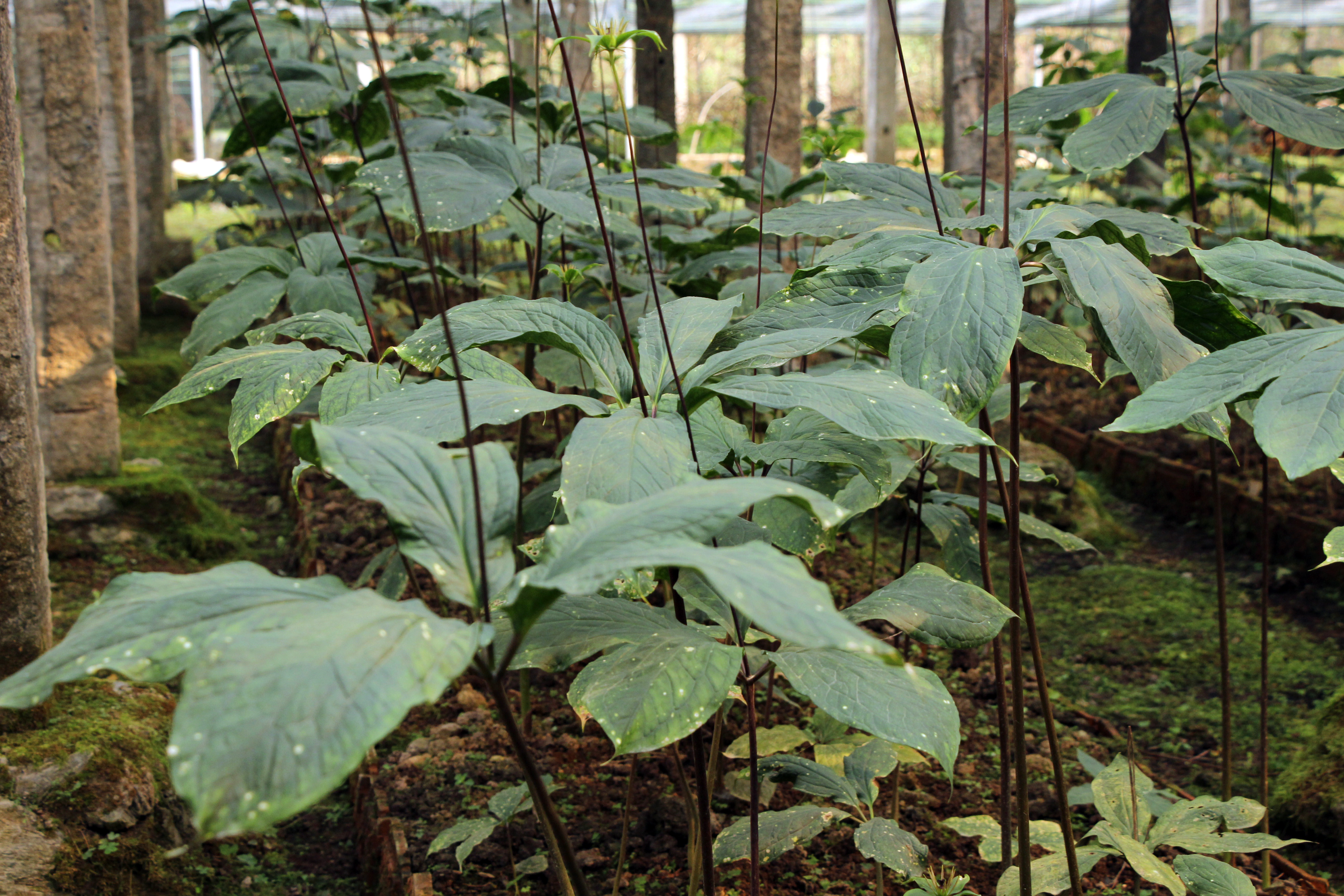
7-leaf, 1-flower ginseng is grown in Muong Long commune, Ky Son. Photo: Dao Tuan
Need a breakthrough solution
Despite many efforts, the number of plant species and rare, precious indigenous medicinal plant genetic resources discovered and listed is still too small, leading to the loss of diversity, loss of varieties and decline in species numbers.
Meanwhile, the facilities for the conservation and research of medicinal plants are still limited. Currently, the province does not have a proper medicinal plant conservation garden, no medicinal plant nursery, and the equipment for research and conservation is still very lacking.
Human resources and technical staff for conservation work are still lacking. Funding for conservation and development work is still low, heavily dependent on the State budget, and has not yet mobilized much participation from other economic sectors.
Meanwhile, localities have not paid attention to the planning, conservation and development of medicinal plants. In particular, the practical application to create specific medicinal products for commercialization and sustainable development is still very limited.
To overcome these limitations, the provincial Department of Science and Technology has identified and focused on researching and conserving valuable and rare medicinal plant genetic resources with high economic value that are already on the conservation list; preventing the loss of medicinal plant genetic resources in nature.
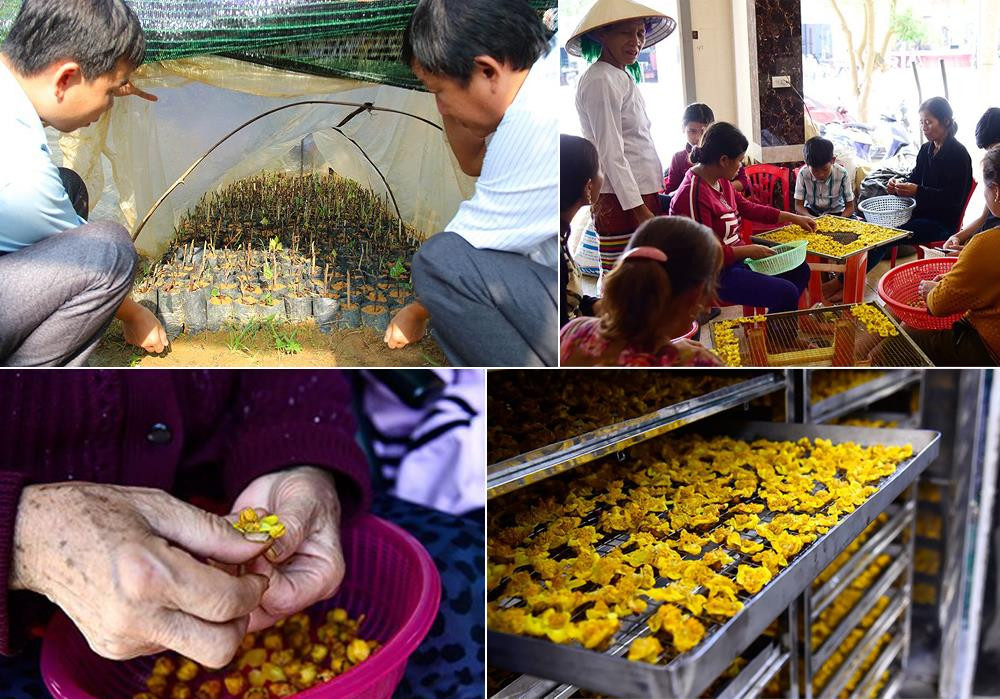 |
| Nurturing and processing yellow flower tea in Que Phong district. Photo: Lam Tung |
Based on the master plan for medicinal plant development in Nghe An province to 2025 and orientation to 2030 approved by the Provincial People's Committee, localities in Western Nghe An need to soon develop detailed plans and take specific actions in managing, preserving and exploiting medicinal plant genetic resources.
Along with that is the active participation of specialized units and agencies and calling on domestic and foreign enterprises to invest in research, production, and deep processing to create products with high health care and economic value from precious medicinal resources in Nghe An.
